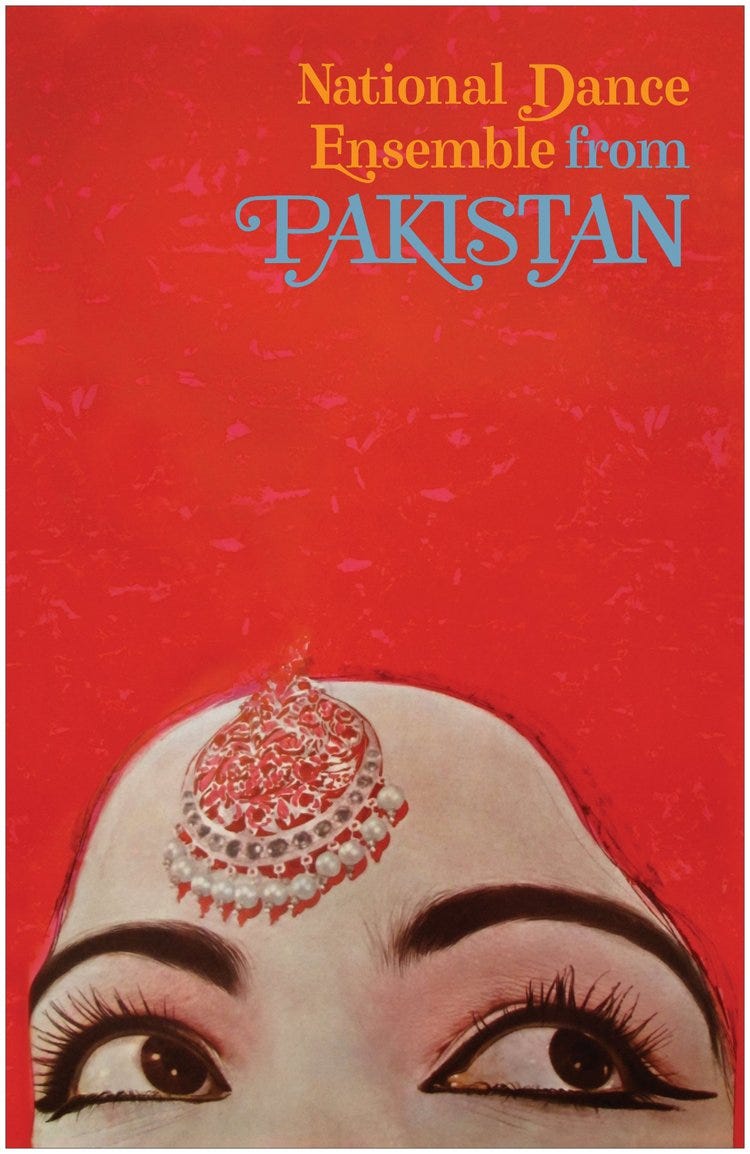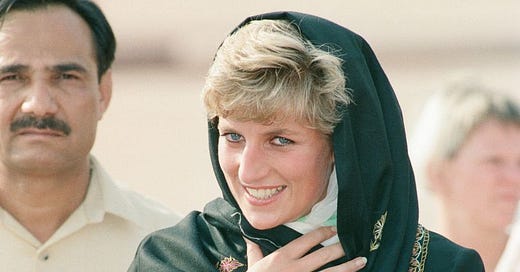Welcome to the Brown History Newsletter. If you’re enjoying this labor of love, please do consider becoming a paid subscriber. Your contribution would help pay the writers and illustrators and support this weekly publication. If you like to submit a writing piece, please send me a pitch by email at brownhistory1947@gmail.com.
Don’t forget to check out our SHOP and our Podcast.

Pakistan and Diana: A Cross-cultural Love
The 1990’s in Pakistan conjures up a culturally brilliant scene: gratifying music, ravishing clothing, mystic paintings, and portraits all over-shadowed with creativity, cinema growth, bangles, Urdu poetry, literature, and pop culture on the whole that extended from sports to personalities. And of course how can I not mention Lady Diana who effortlessly became a part of this magnificent decade.
The colonial legacy that has been lingering in Pakistan since Partition continues to foster a sense of subservience towards our indigenous elements – our own people, our languages, and our cultures, while uplifting colonial norms and values. But before delving into this article, however, it must be clarified that writing about Princess Diana is certainly not an extension of that very colonial legacy. I am not glorifying the British Royal Family which, after all, is Imperial; but rather I am solely shedding light on how Diana Spencer intrinsically became a part of the Pakistani culture, and that how a person with a totally different culture, language, and a member of the monarchy who ruled the entire subcontinent has somehow emerged as the only non-Pakistani person in the world to be loved so much by the nation. Therefore, the foundation of Diana’s love is cultural relevance, despite its irrelevance and hence any inferiority complex is not relevant.





